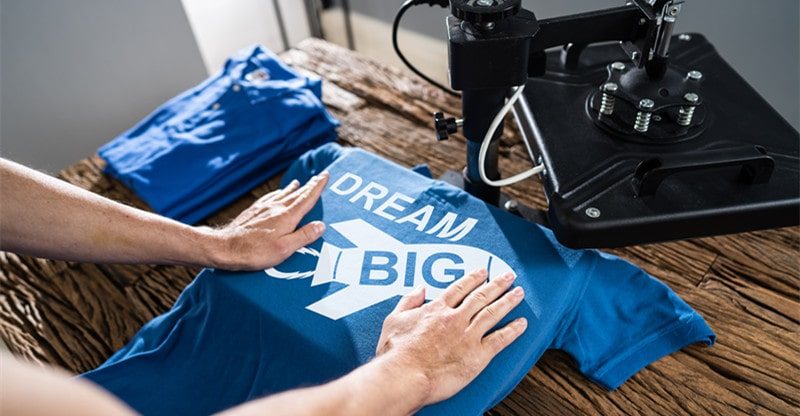Mastering T-Shirt Printing: Tips and Tricks
T-shirt printing has evolved from a simple hobby to a thriving industry. Whether you’re a DIY enthusiast or looking to start a small business, understanding the tips and tricks of t-shirt printing can make all the difference. In this guide, we’ll delve into the world of t-shirt printing, explore various printing techniques, and provide valuable insights to help you create eye-catching designs. So, let’s dive right in!
Getting Started with T-shirt Printing
Before you dive into the world of t-shirt printing, it’s essential to lay a strong foundation. Start by selecting the right t-shirt. Consider the fabric, quality, and size. Remember, the better the quality of the t-shirt, the more professional your final product will appear.
Preparing your design is the next crucial step. Whether you’re creating your design from scratch or using existing artwork, ensure it’s in the right format and resolution. Vector graphics are preferred for their scalability, while raster graphics can work well if they’re high resolution.
T-shirt Printing Techniques
Now, let’s explore various t-shirt printing techniques, each with its unique characteristics:
- Screen Printing: This traditional method involves creating a stencil (or screen) for each color in your design and then pressing ink through the screens onto the t-shirt fabric. It’s known for its durability and ability to produce bold, vibrant colors. However, screen printing can be labor-intensive and less cost-effective for small quantities.
- Heat Transfer Printing: Heat transfer printing uses heat and pressure to transfer a design onto a t-shirt using special heat transfer paper and a heat press machine. It’s a versatile option, suitable for both light and dark-colored fabrics. Keep in mind that heat transfer prints may crack or fade over time, so proper care is essential.
- Vinyl Printing: Vinyl printing involves cutting designs from vinyl sheets and then heat-pressing them onto the t-shirt. It’s perfect for simple, single-color designs or text. Vinyl prints are durable and have a unique texture. However, intricate designs can be challenging to achieve with this method.
- DTF Printing: Another noteworthy method in the realm of t-shirt printing is Direct-to-Film (DTF) printing. This innovative technique involves printing your design onto a special DTF film, which is then heat-transferred onto the t-shirt. DTF offers excellent color vibrancy and detail reproduction, making it a fantastic choice for intricate and multicolored designs. It’s a versatile option that works well on both light and dark fabrics, and it’s gaining popularity in the industry due to its impressive results. When using DTF film, ensure that your printer is compatible and calibrated for this method to achieve the best outcomes in your t-shirt printing endeavors.
Tools and Equipment
Investing in the right tools and equipment is crucial for successful t-shirt printing. High-quality printers and machines, such as DTG printers or heat press machines, are essential for achieving professional results. Additionally, you’ll need various inks and printing materials, depending on your chosen technique.
Don’t forget safety precautions. Some printing methods involve heat and chemicals, so always follow safety guidelines and use protective gear when necessary. Proper ventilation in your workspace is also important to avoid inhaling harmful fumes.
Tips for Design and Artwork
Your design is the heart of your t-shirt printing project. Here are some tips to ensure your artwork shines:
- Vector vs. Raster Graphics: Vector graphics are created using mathematical equations, ensuring they can be scaled up or down without losing quality. Raster graphics, on the other hand, are composed of pixels and can become pixelated when enlarged. Use vector graphics for clean and crisp designs.
- Color Considerations: Choose your colors carefully. Consider the color of the t-shirt and how it will interact with your design. Bright colors pop on dark fabrics, while subtle shades work well on lighter shirts.
- Sizing and Placement: Pay attention to the size and placement of your design. Ensure it’s centered and aligned correctly on the t-shirt. Experiment with different placements to find the most visually appealing option.
- Preparing for Multicolor Prints: If your design involves multiple colors, plan the order in which you’ll print them. Start with the lightest colors and finish with the darkest to avoid color bleeding.
Troubleshooting Common Issues
Even with careful planning, issues can arise during the t-shirt printing process. Here are some common problems and solutions:
- Ink Bleeding: To prevent ink bleeding, use the right type of ink for your chosen method and ensure proper drying and curing of the print.
- Fading Prints: Fading can occur over time, especially with heat transfer prints. To prolong the life of your prints, wash your t-shirts inside out in cold water and avoid excessive heat during drying.
- Printing Errors: Regularly maintain your equipment to prevent printing errors. Clean your printer heads, replace worn-out parts, and use quality materials to minimize errors.
- Design Alignment: Always double-check the alignment of your design on the t-shirt before printing. A misaligned design can ruin an otherwise perfect shirt.
Post-Printing Care and Maintenance
Once you’ve completed your t-shirt printing, the work isn’t over. Proper care and maintenance are essential for long-lasting prints.
- Curing and Drying: Follow the recommended curing and drying instructions for your chosen printing method. This ensures that the ink bonds properly with the fabric
- Washing and Care Instructions: Provide clear washing and care instructions to your customers if you’re selling your printed t-shirts. Use a mild detergent, avoid bleach, and turn the shirt inside out to protect the design.
- Storage Tips: Store your printed t-shirts in a cool, dry place away from direct sunlight. This helps prevent fading and damage.
Marketing and Selling Printed T-shirts
If you’re considering turning your t-shirt printing into a business, here are some tips:
- Pricing Strategies: Determine your pricing strategy carefully. Consider factors such as production costs, market demand, and your target audience.
- Online and Offline Sales Channels: Explore various sales channels, from setting up an online store to selling at local markets or events. Each channel has its advantages and challenges.
- Building a Brand: Establish a unique brand identity for your t-shirt business. A strong brand can help you stand out in a competitive market.
Conclusion
T-shirt printing is a creative and rewarding endeavor. Whether you’re printing for personal use or starting a business, mastering the tips and tricks of the trade is key to success. Remember to choose the right t-shirt, design with care, select the best printing technique for your needs, and take steps to ensure the longevity of your prints.
With dedication and a dash of creativity, you can create stunning t-shirts that leave a lasting impression. Happy printing!



